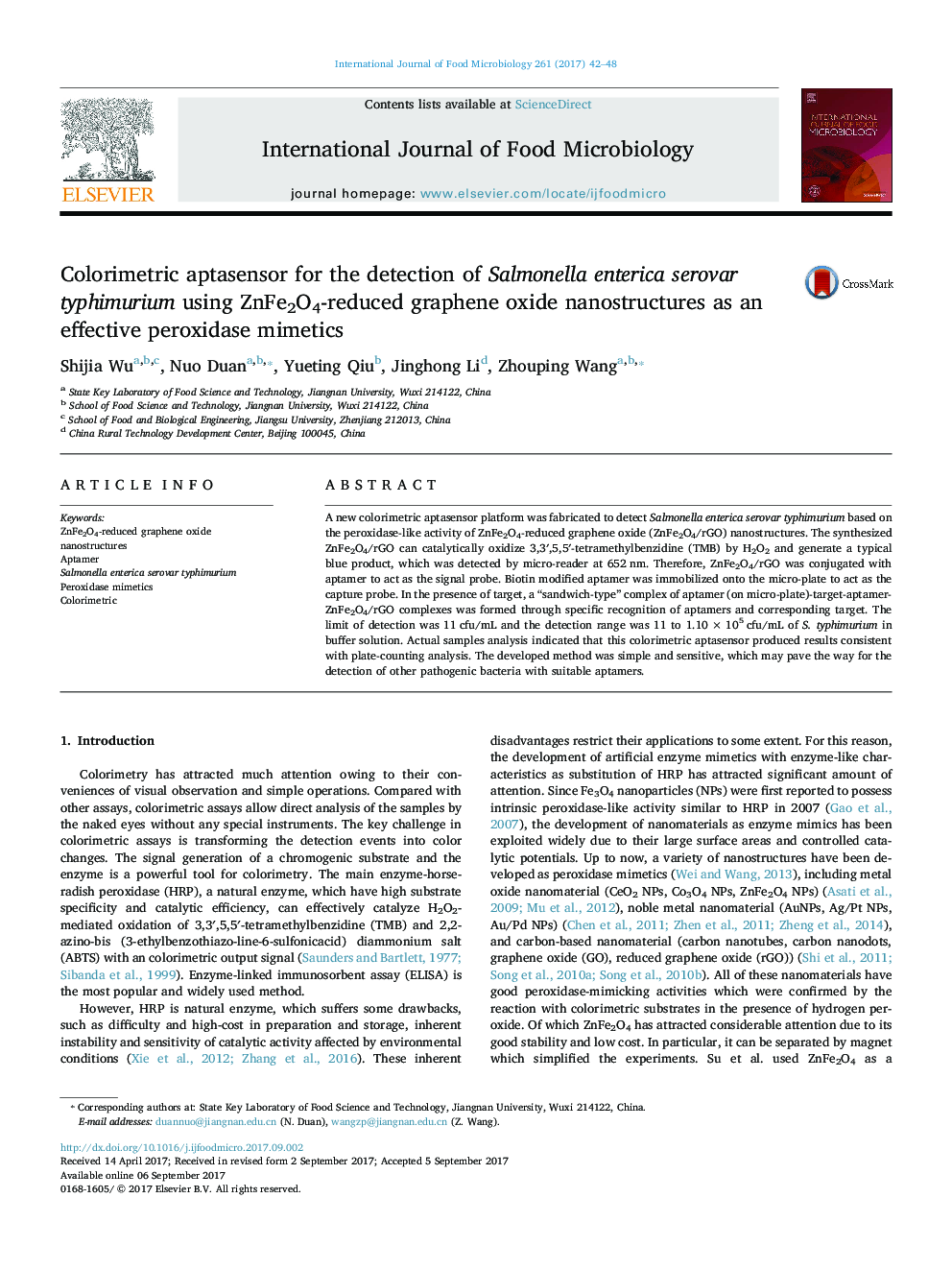| Article ID | Journal | Published Year | Pages | File Type |
|---|---|---|---|---|
| 5740575 | International Journal of Food Microbiology | 2017 | 7 Pages |
â¢A colorimetric-based aptasensor was developed for bacteria detection.â¢ZnFe2O4-rGO nanostructures were synthesized as an effective peroxidase mimetics.â¢The method was sensitive and specific by using aptamers as recognition elements.â¢The method was successfully applied to milk samples.
A new colorimetric aptasensor platform was fabricated to detect Salmonella enterica serovar typhimurium based on the peroxidase-like activity of ZnFe2O4-reduced graphene oxide (ZnFe2O4/rGO) nanostructures. The synthesized ZnFe2O4/rGO can catalytically oxidize 3,3â²,5,5â²-tetramethylbenzidine (TMB) by H2O2 and generate a typical blue product, which was detected by micro-reader at 652Â nm. Therefore, ZnFe2O4/rGO was conjugated with aptamer to act as the signal probe. Biotin modified aptamer was immobilized onto the micro-plate to act as the capture probe. In the presence of target, a “sandwich-type” complex of aptamer (on micro-plate)-target-aptamer-ZnFe2O4/rGO complexes was formed through specific recognition of aptamers and corresponding target. The limit of detection was 11Â cfu/mL and the detection range was 11 to 1.10Â ÃÂ 105Â cfu/mL of S. typhimurium in buffer solution. Actual samples analysis indicated that this colorimetric aptasensor produced results consistent with plate-counting analysis. The developed method was simple and sensitive, which may pave the way for the detection of other pathogenic bacteria with suitable aptamers.
